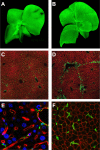Cre-ativity in the liver: transgenic approaches to targeting hepatic nonparenchymal cells
- PMID: 25412828
- PMCID: PMC4657490
- DOI: 10.1002/hep.27606
Cre-ativity in the liver: transgenic approaches to targeting hepatic nonparenchymal cells
Abstract
Rapid evolution in transgenic (Tg) mouse technology now permits cell-specific and temporal control of fluorescent cell-labeling and gene inactivation. Here, we discuss the principal strategies that have been utilized to target, label, and manipulate hepatic nonparenchymal cells, with emphasis on the utility of constitutive and inducible Cre-lox systems. We summarize key findings of studies employing Tg technology to target hepatic stellate cells, myofibroblasts, liver sinusoidal endothelial cells, and macrophages to illustrate the power of these approaches in identifying cell-specific molecular mechanisms critical to the pathophysiology of liver disease. Increasing adoption of Tg techniques will help to answer fundamental questions regarding the pathogenesis of hepatic diseases and provide the mechanistic rationale to allow identification of novel drug targets, ultimately translating into effective therapies for patients with liver disease.
© 2015 by the American Association for the Study of Liver Diseases.
Figures



References
Publication types
MeSH terms
Grants and funding
LinkOut - more resources
Full Text Sources
Other Literature Sources
Medical
Miscellaneous
